Abstract
Nitrate uptake in Neurospora crassa has been investigated under various conditions of nitrogen nutrition by measuring the rate of disappearance of nitrate from the medium and by determining mycelial nitrate accumulation. The nitrate transport system is induced by either nitrate or nitrite, but is not present in mycelia grown on ammonia or Casamino Acids. The appearance of nitrate uptake activity is prevented by cycloheximide, puromycin, or 6-methyl purine. The induced nitrate transport system displays a Km for nitrate of 0.25 mM. Nitrate uptake is inhibited by metabolic poisons such as 2,4-dinitrophenol, cyanide, and antimycin A. Furthermore, mycelia can concentrate nitrate 50-fold. Ammonia and nitrite are non-competitive inhibitors with respect to nitrate, with Ki values of 0.13 and 0.17 mM, respectively. Ammonia does not repress the formation of the nitrate transport system. In contrast, the nitrate uptake system is repressed by Casamino Acids. All amino acids individually prevent nitrate accumulation, with the exception of methionine, glutamine, and alanine. The influence of nitrate reduction and the nitrate reductase protein on nitrate transport was investigated in wild-type Neurospora lacking a functional nitrate reductase and in nitrate non-utilizing mutants, nit-1, nit-2, and nit-3. These mycelia contain an inducible nitrate transport system which displays the same characteristics as those found in the wild-type mycelia having the functional nitrate reductase. These findings suggest that nitrate transport is not dependent upon nitrate reduction and that these two processes are separate events in the assimilation of nitrate.
Full text
PDF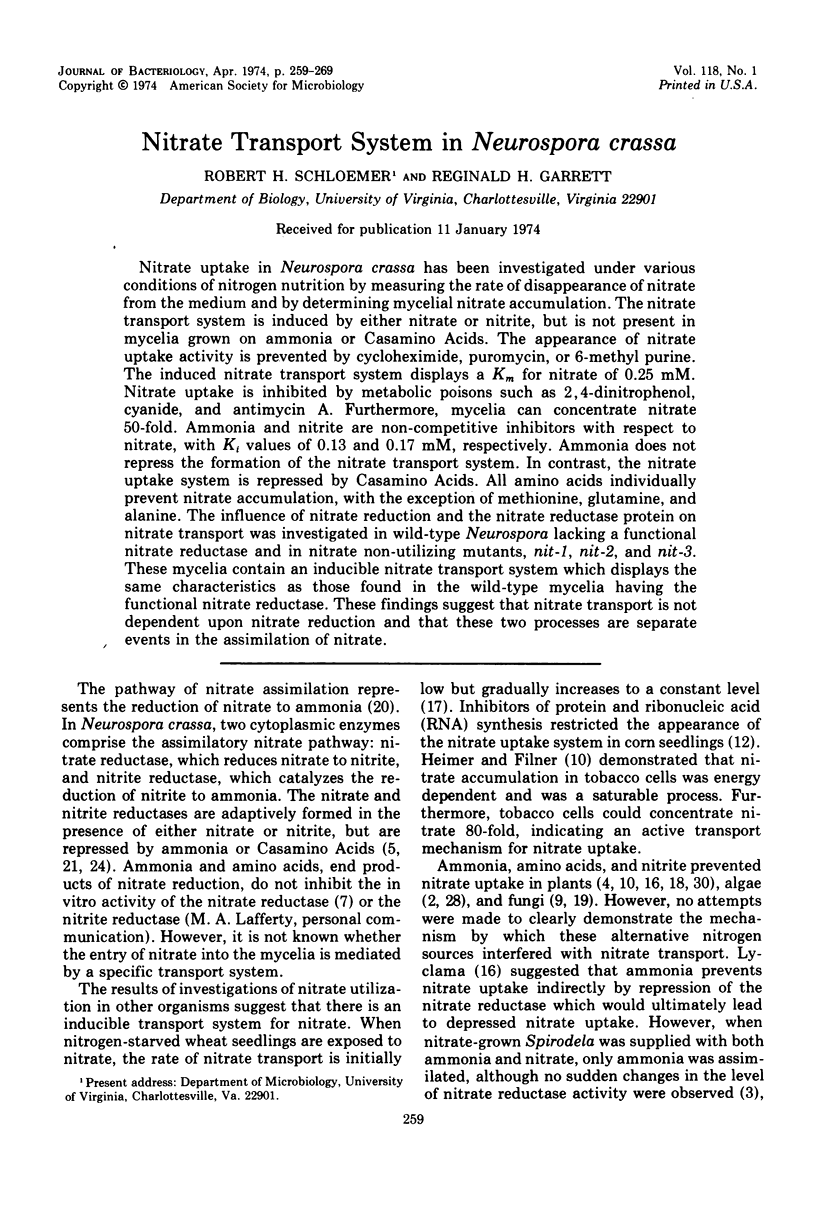
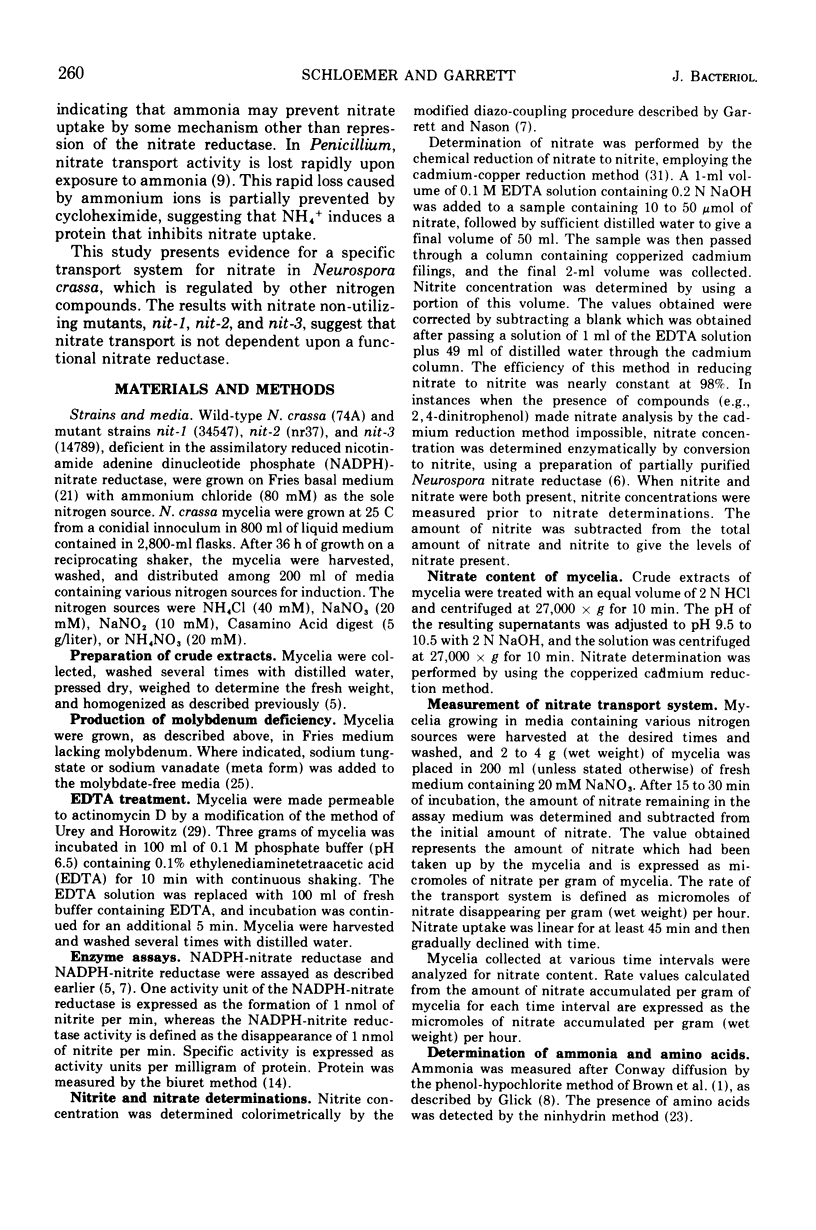
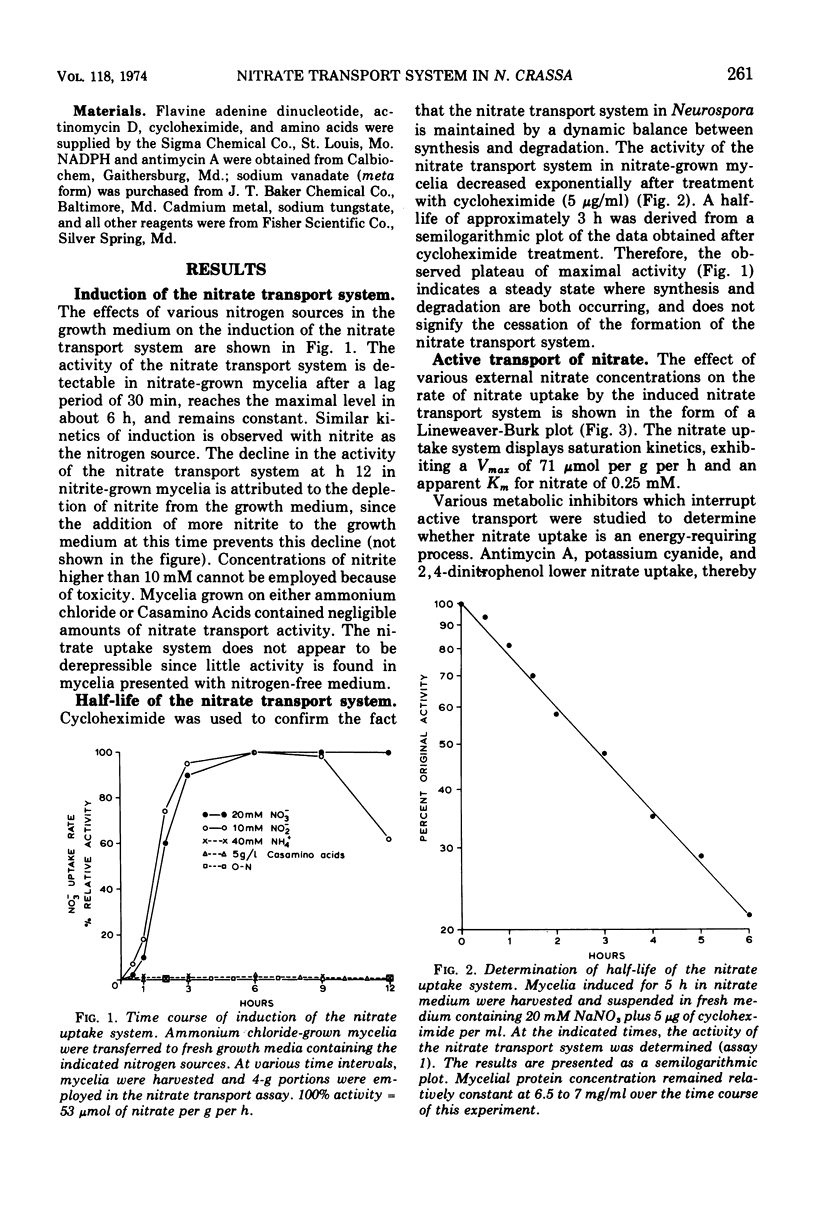
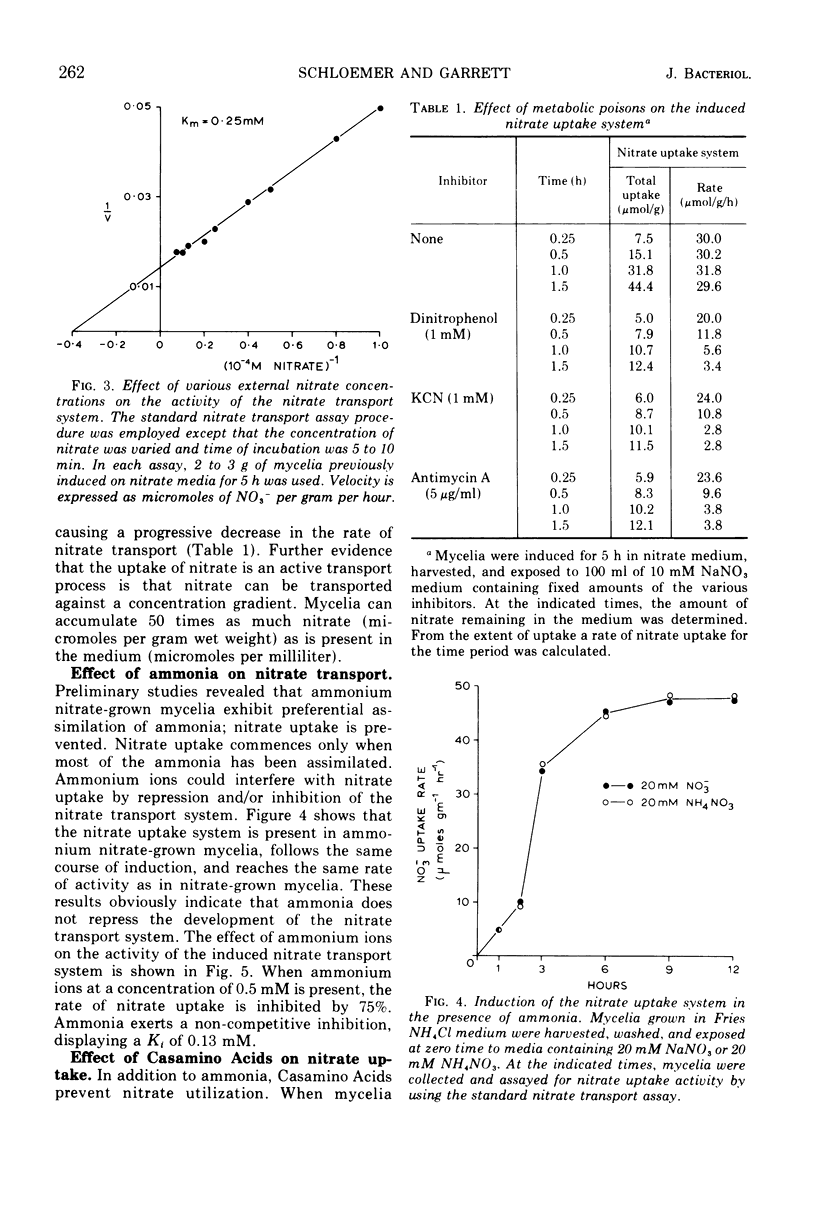
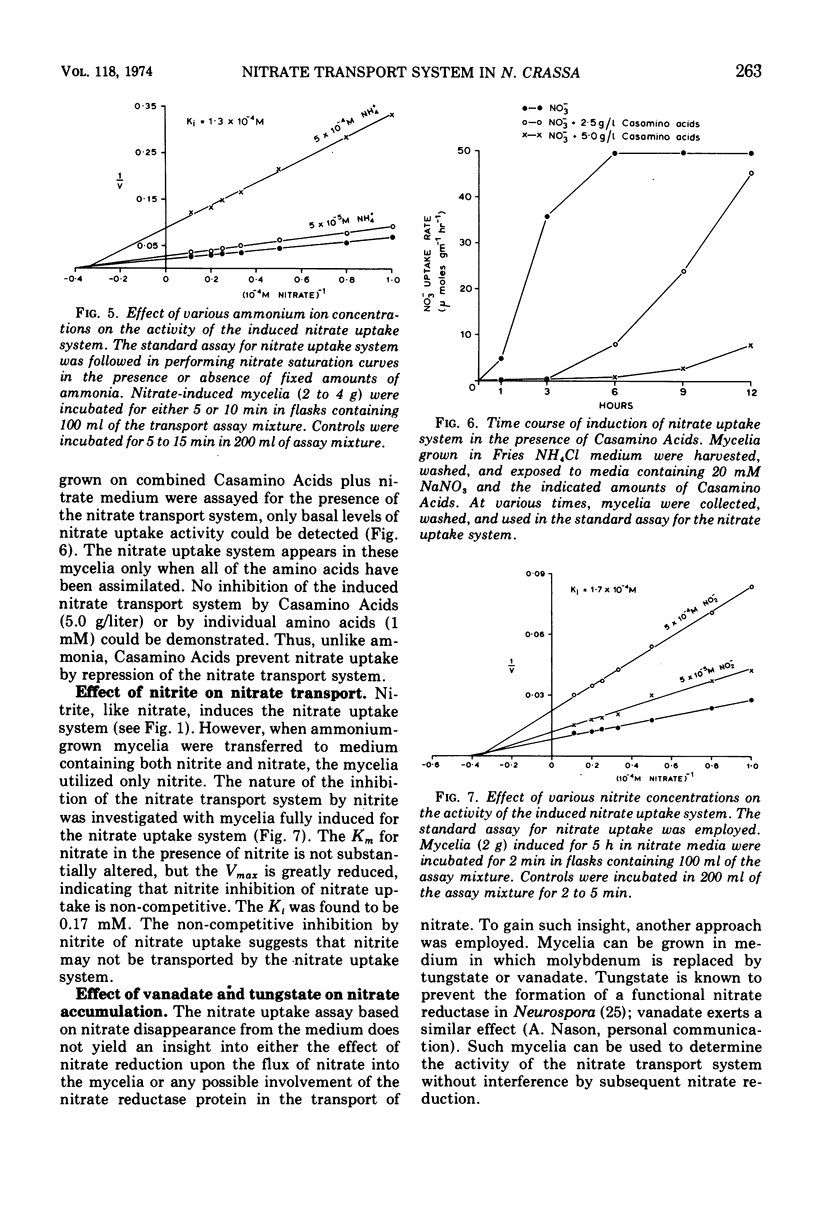
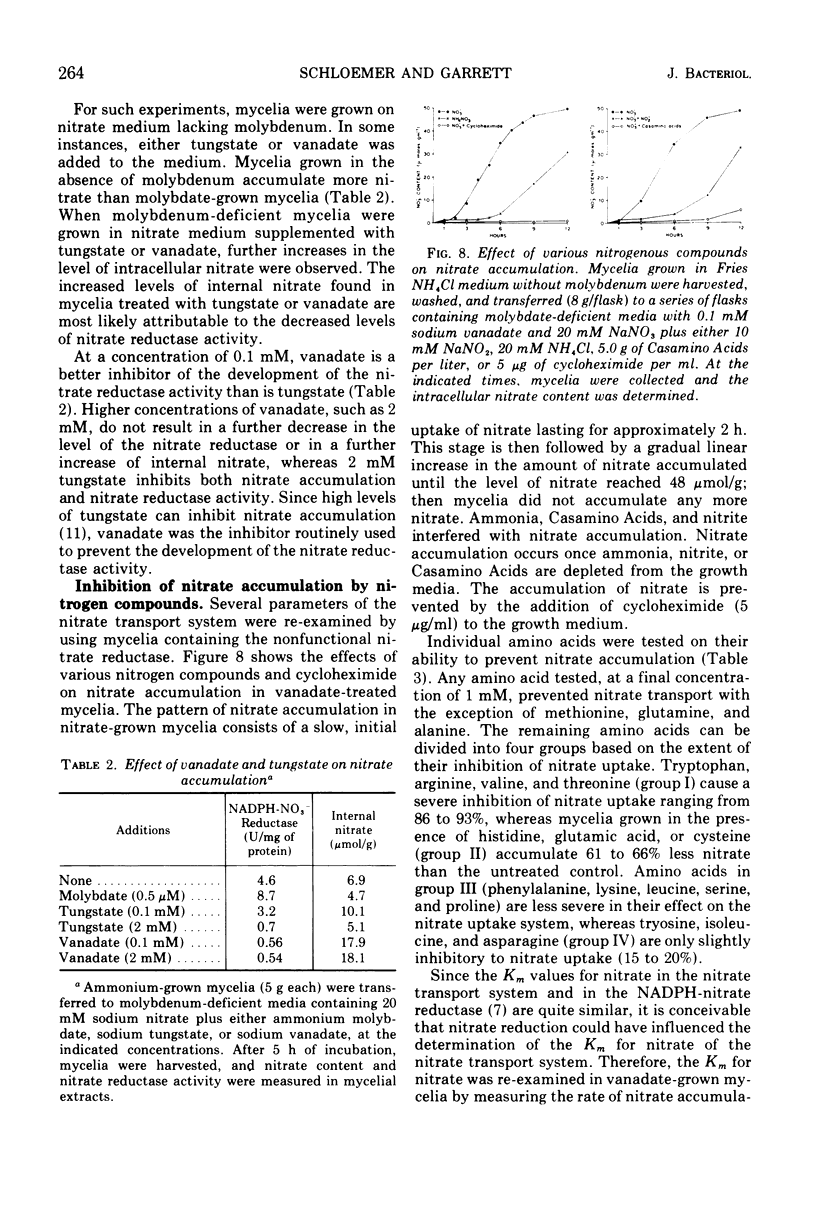
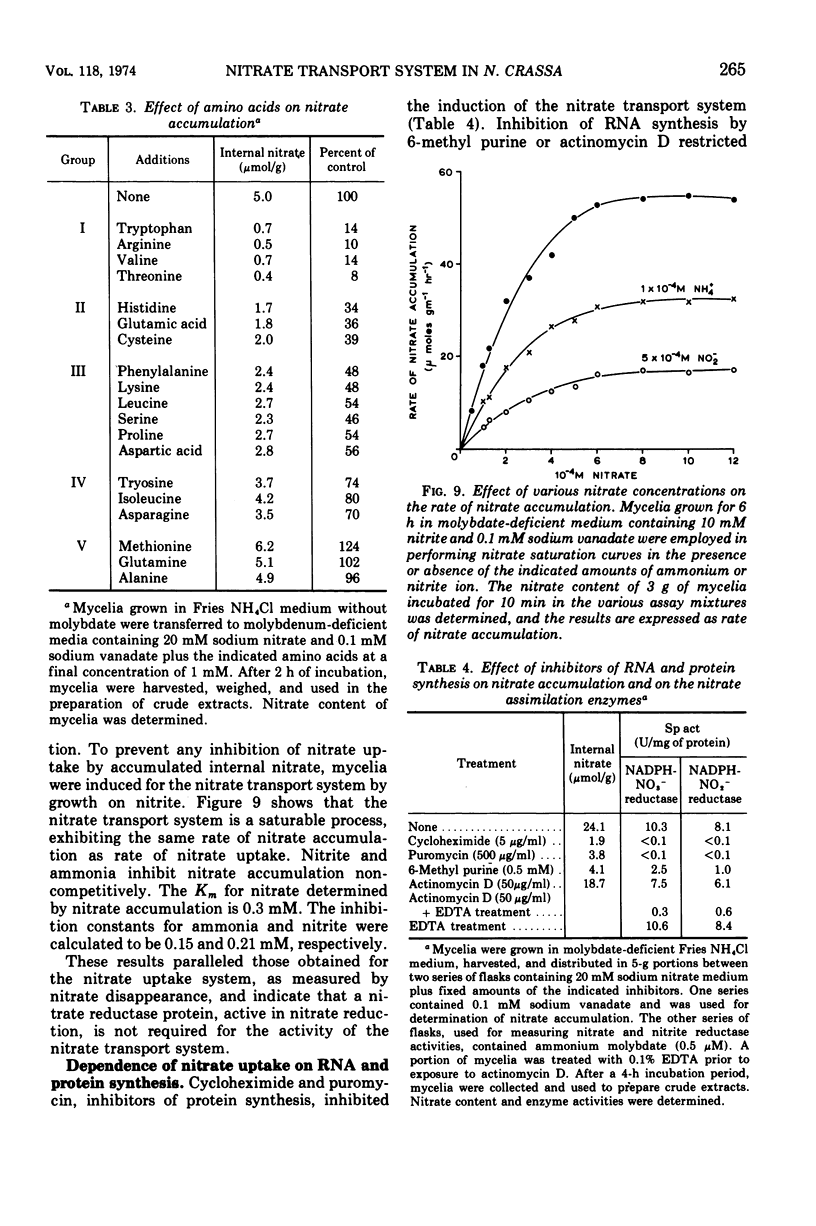
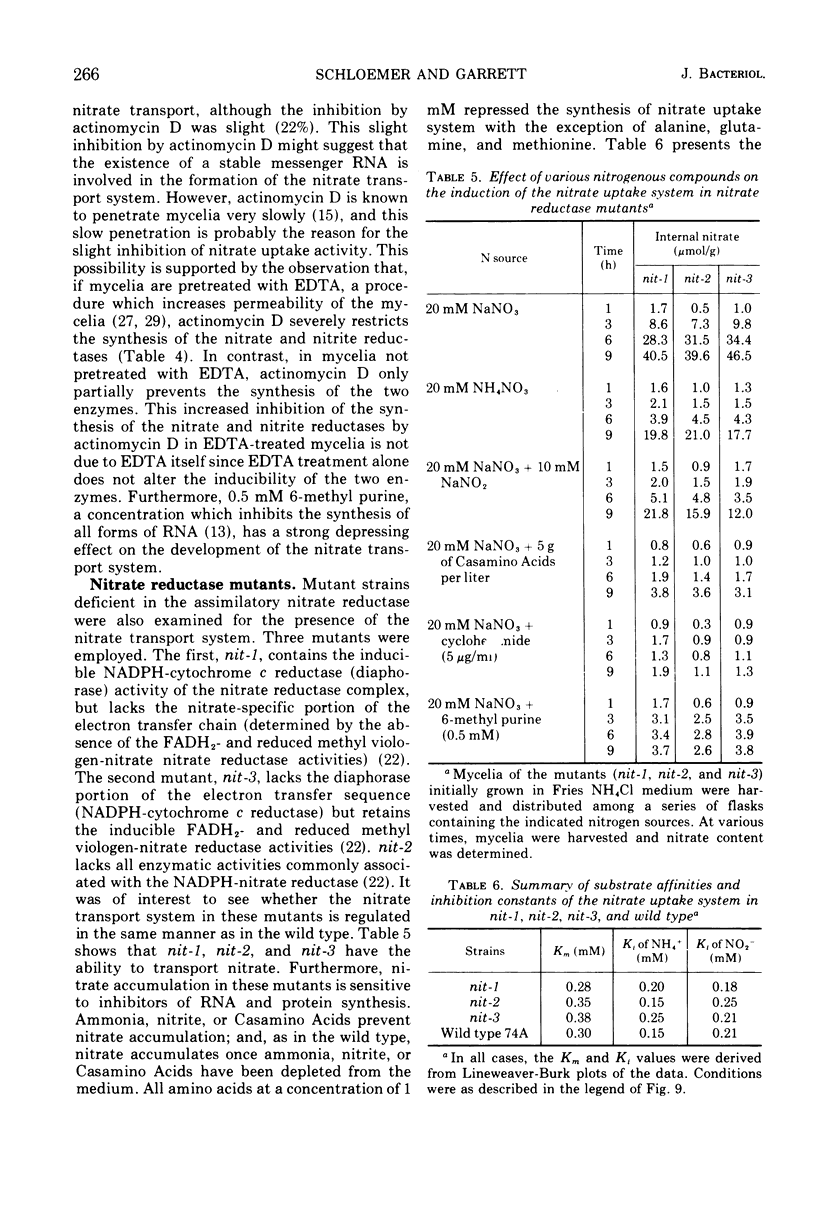
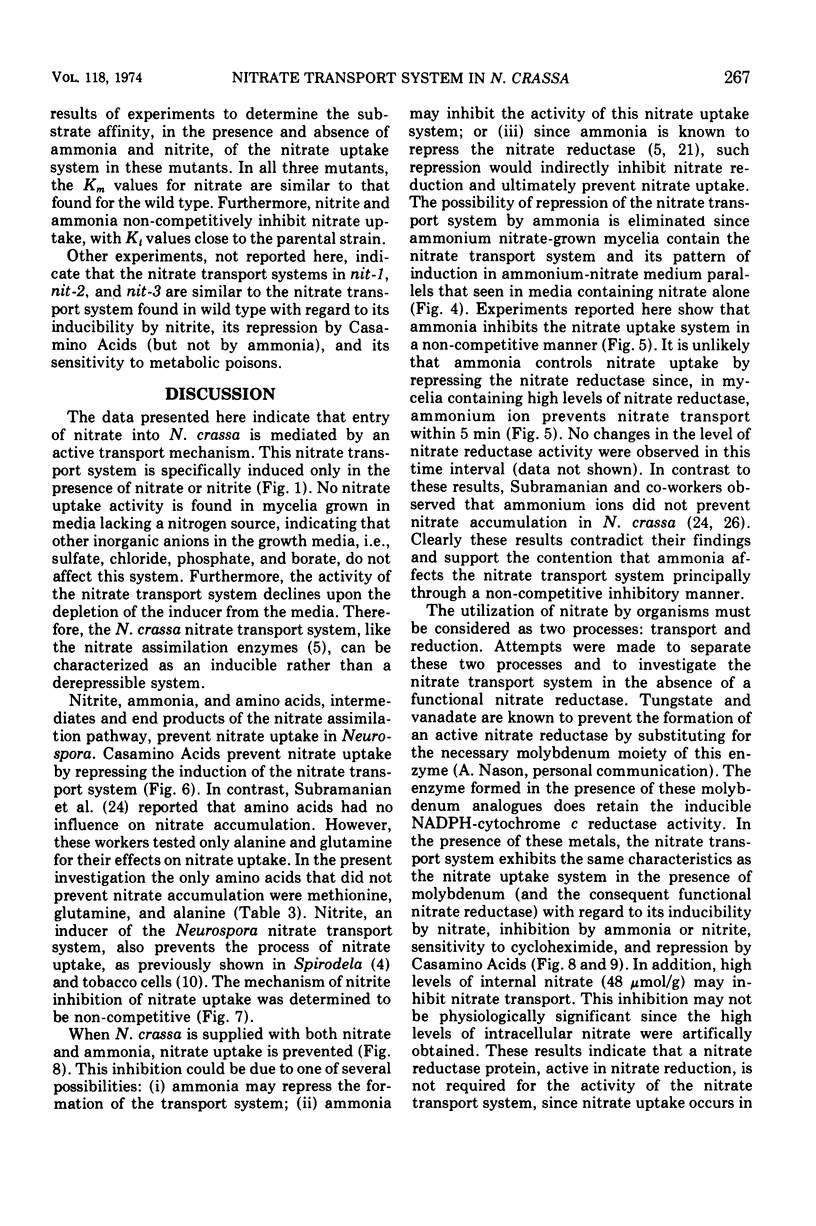
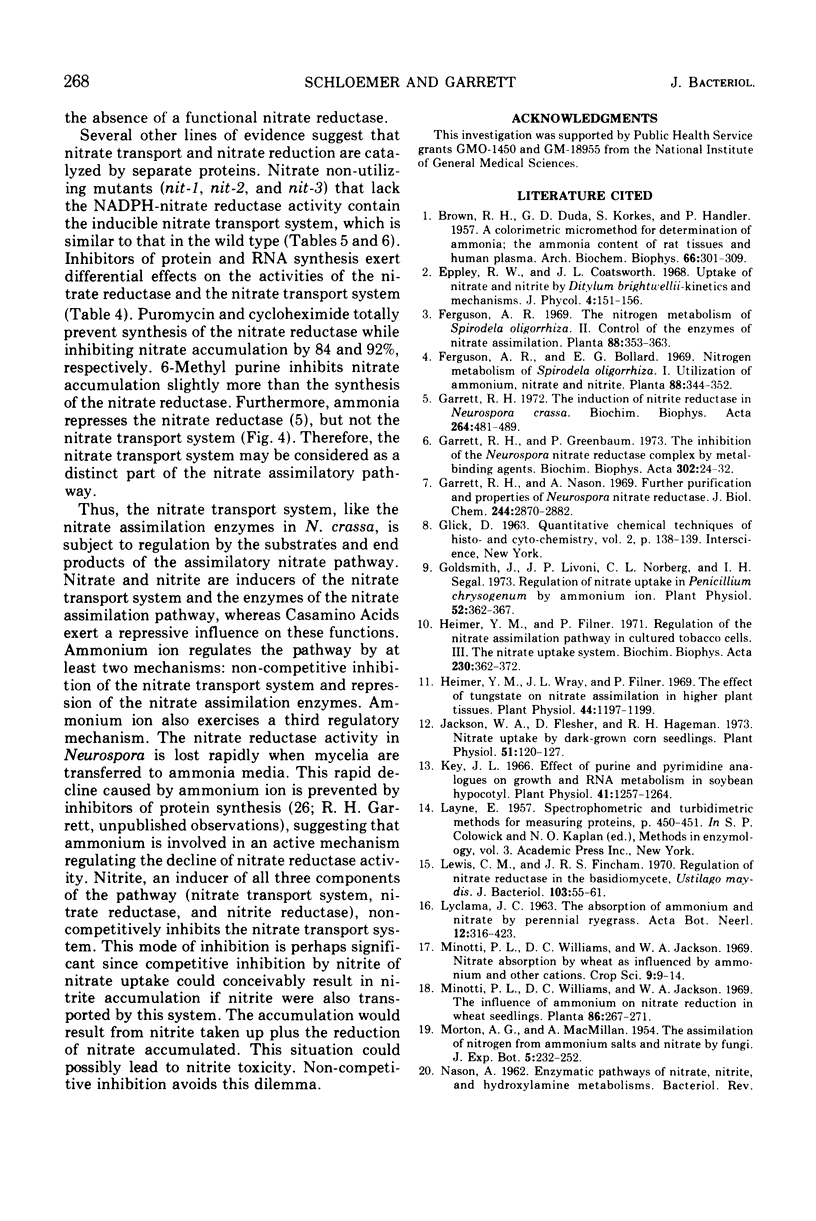
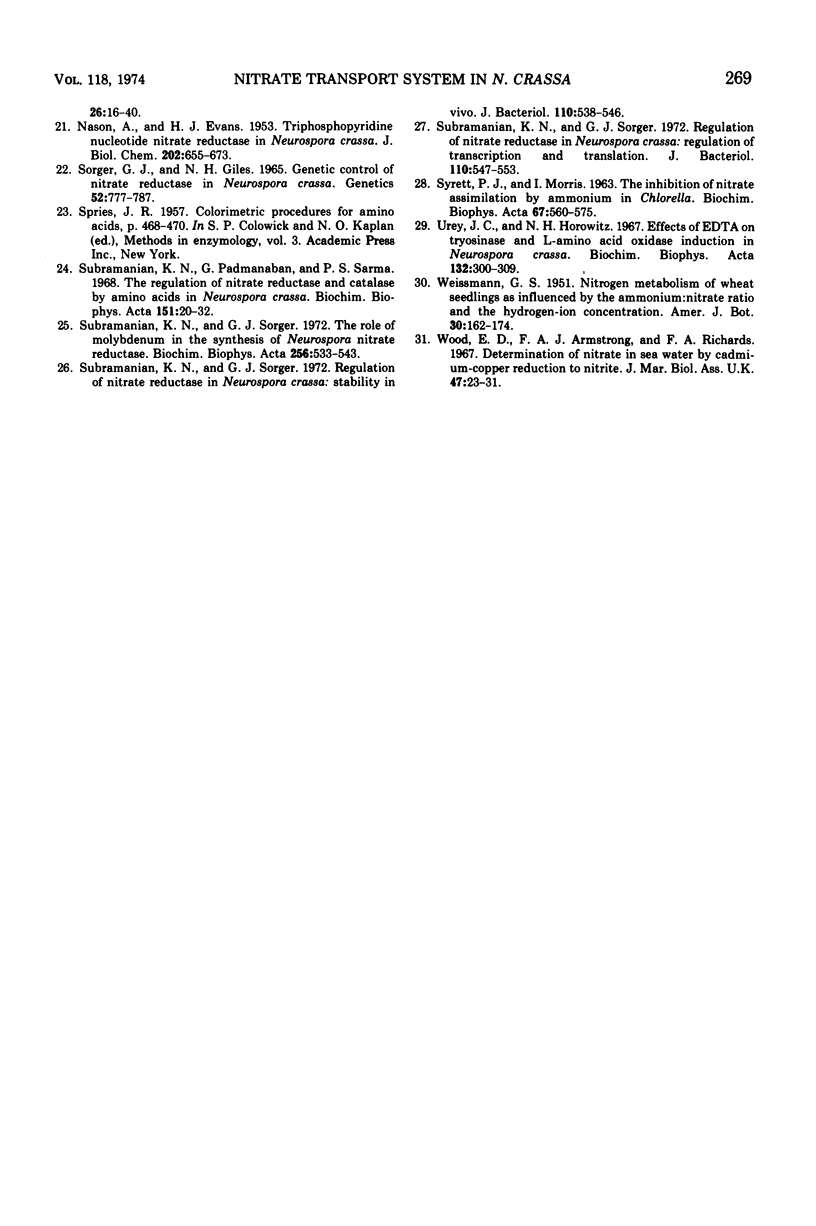
Selected References
These references are in PubMed. This may not be the complete list of references from this article.
- BROWN R. H., DUDA G. D., KORKES S., HANDLER P. A colorimetric micromethod for determination of ammonia; the ammonia content of rat tissues and human plasma. Arch Biochem Biophys. 1957 Feb;66(2):301–309. doi: 10.1016/s0003-9861(57)80005-8. [DOI] [PubMed] [Google Scholar]
- Garrett R. H., Greenbaum P. The inhibition of the Neurospora crassa nitrate reductase complex by metal-binding agents. Biochim Biophys Acta. 1973 Mar 15;302(1):24–32. doi: 10.1016/0005-2744(73)90004-1. [DOI] [PubMed] [Google Scholar]
- Garrett R. H., Nason A. Further purification and properties of Neurospora nitrate reductase. J Biol Chem. 1969 Jun 10;244(11):2870–2882. [PubMed] [Google Scholar]
- Garrett R. H. The induction of nitrite reductase in Neurospora crassa. Biochim Biophys Acta. 1972 May 16;264(3):481–489. doi: 10.1016/0304-4165(72)90011-6. [DOI] [PubMed] [Google Scholar]
- Goldsmith J., Livoni J. P., Norberg C. L., Segel I. H. Regulation of Nitrate Uptake in Penicillium chrysogenum by Ammonium Ion. Plant Physiol. 1973 Oct;52(4):362–367. doi: 10.1104/pp.52.4.362. [DOI] [PMC free article] [PubMed] [Google Scholar]
- Heimer Y. M., Filner P. Regulation of the nitrate assimilation pathway in cultured tobacco cells. 3. The nitrate uptake system. Biochim Biophys Acta. 1971 Feb 23;230(2):362–372. doi: 10.1016/0304-4165(71)90223-6. [DOI] [PubMed] [Google Scholar]
- Heimer Y. M., Wray J. L., Filner P. The effect of tungstate on nitrate assimilation in higher plant tissues. Plant Physiol. 1969 Aug;44(8):1197–1199. doi: 10.1104/pp.44.8.1197. [DOI] [PMC free article] [PubMed] [Google Scholar]
- Jackson W. A., Flesher D., Hageman R. H. Nitrate Uptake by Dark-grown Corn Seedlings: Some Characteristics of Apparent Induction. Plant Physiol. 1973 Jan;51(1):120–127. doi: 10.1104/pp.51.1.120. [DOI] [PMC free article] [PubMed] [Google Scholar]
- Key J. L. Effect of purine and pyrimidine analogues on growth and RNA metabolism in the soybean hypocotyl-the selective action of 5-fluorouracil. Plant Physiol. 1966 Oct;41(8):1257–1264. doi: 10.1104/pp.41.8.1257. [DOI] [PMC free article] [PubMed] [Google Scholar]
- Lewis C. M., Fincham J. R. Regulation of nitrate reductase in the basidiomycete Ustilago maydis. J Bacteriol. 1970 Jul;103(1):55–61. doi: 10.1128/jb.103.1.55-61.1970. [DOI] [PMC free article] [PubMed] [Google Scholar]
- NASON A., EVANS H. J. Triphosphopyridine nucleotide-nitrate reductase in Neurospora. J Biol Chem. 1953 Jun;202(2):655–673. [PubMed] [Google Scholar]
- Sorger G. J., Giles N. H. Genetic control of nitrate reductase in Neurospora crassa. Genetics. 1965 Oct;52(4):777–788. doi: 10.1093/genetics/52.4.777. [DOI] [PMC free article] [PubMed] [Google Scholar]
- Subramanian K. N., Padmanaban G., Sarma P. S. The regulation of nitrate reductase and catalase by amino acids in Neurospora crassa. Biochim Biophys Acta. 1968 Jan 8;151(1):20–32. doi: 10.1016/0005-2744(68)90157-5. [DOI] [PubMed] [Google Scholar]
- Subramanian K. N., Sorger G. J. Regulation of nitrate reductase in Neurospora crassa: regulation of transcription and translation. J Bacteriol. 1972 May;110(2):547–553. doi: 10.1128/jb.110.2.547-553.1972. [DOI] [PMC free article] [PubMed] [Google Scholar]
- Subramanian K. N., Sorger G. J. Regulation of nitrate reductase in Neurospora crassa: stability in vivo. J Bacteriol. 1972 May;110(2):538–546. doi: 10.1128/jb.110.2.538-546.1972. [DOI] [PMC free article] [PubMed] [Google Scholar]
- Subramanian K. N., Sorger G. J. The role of molybdenum in the synthesis of Neurospora nitrate reductase. Biochim Biophys Acta. 1972 Feb 28;256(2):533–543. doi: 10.1016/0005-2728(72)90081-3. [DOI] [PubMed] [Google Scholar]
- Urey J. C., Horowitz N. H. Effects of EDTA on tyrosinase and L-amino-acid oxidase induction in Neurospora crassa. Biochim Biophys Acta. 1967 Mar 15;132(2):300–309. doi: 10.1016/0005-2744(67)90149-0. [DOI] [PubMed] [Google Scholar]


